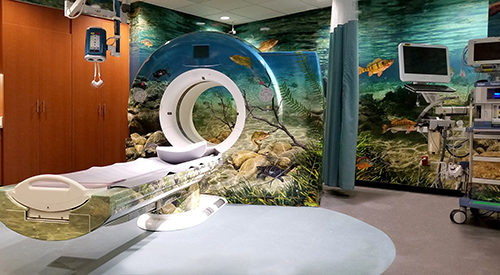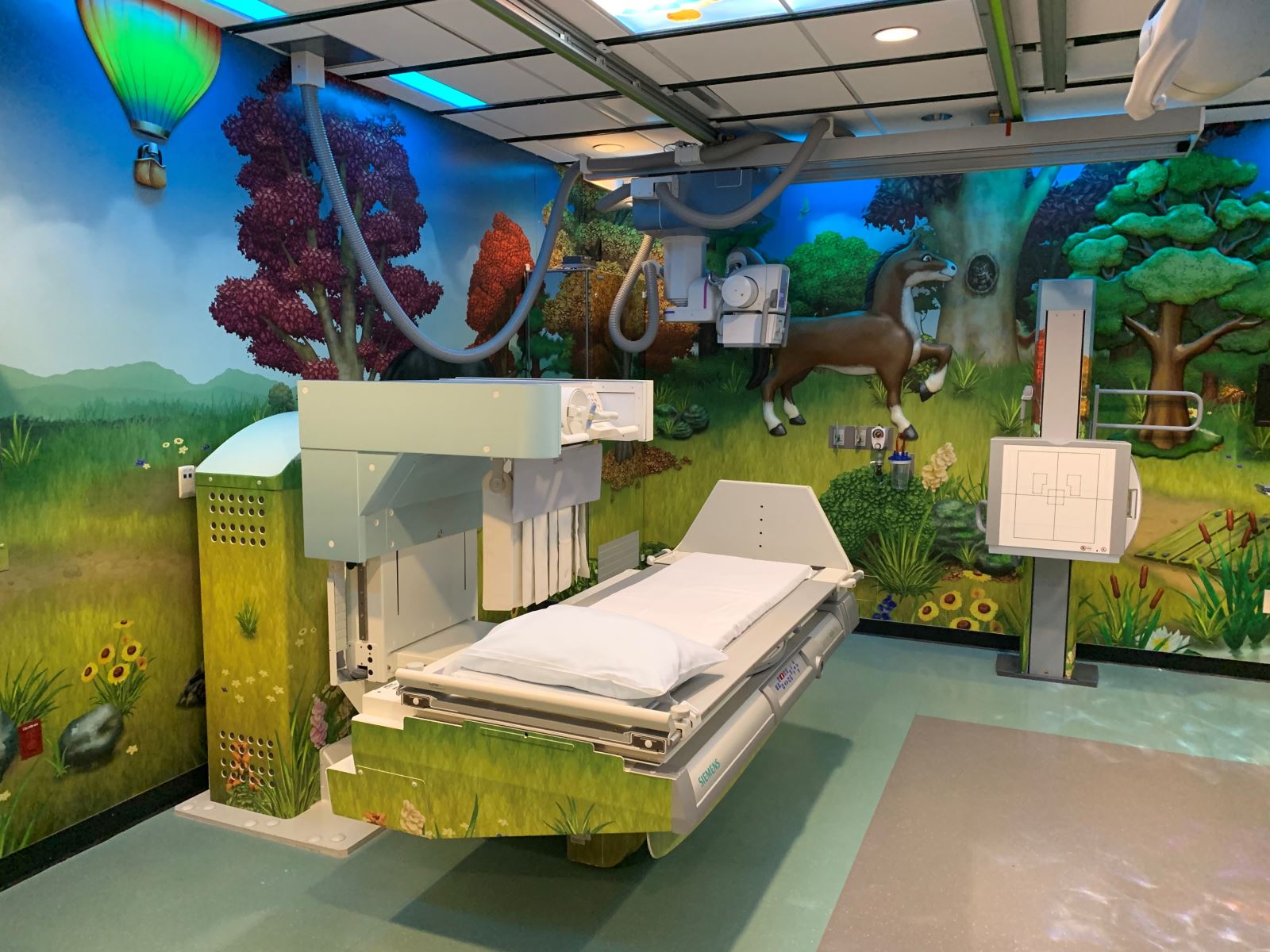Radiology
Children's radiology: CHoR's serious, sensitive approach to imaging
Imaging procedures help us make an accurate diagnosis and are often an important part of your child's treatment plan. All of our pediatric radiologists have tailored training to perform and interpret imaging for children.
Our team uses kid-friendly expertise to select and perform the most appropriate imaging - as quickly, safely and precisely as possible.
Diagnostic imaging and radiology procedures
Some common procedures performed at CHoR include:
- CT scan
- Diagnostic x-ray
- EOS imaging
- Fluoroscopy
- Fetal MRI
- MRI
- Ultrasound (sonography)
Our pediatric radiologists and technologists use the latest imaging equipment
 Our underwater-themed CT room uses a FLASH CT scanner that scans within seconds, which eliminates the need for sedation in most children. We follow special pediatric protocols that help minimize the amount of radiation used for each study, while also creating a radiation plan tailored to your child's body.
Our underwater-themed CT room uses a FLASH CT scanner that scans within seconds, which eliminates the need for sedation in most children. We follow special pediatric protocols that help minimize the amount of radiation used for each study, while also creating a radiation plan tailored to your child's body.
Our EOS Imaging System offers a low-dose X-ray machine that takes images of your child upright focusing on the spine, hips or legs. The EOS Imaging System is used to diagnose and create treatment plans for those with musculoskeletal disorders like leg length discrepancies or scoliosis. The EOS Imaging System uses two to three times less radiation than other imaging tests which is beneficial to those patients who are imaged frequently.
 In our woodland friends themed fluoroscopy room, children having a fluoroscopy exam receive “real time” or live images of the body that help the doctors see how organs and body system function. Most fluoroscopy studies require your child to have some type of contrast media, which helps the physicians visualize the organs that are being studied. Contrast media is administered by drinking, injecting or through an enema depending on which exam your child is having. Parents or guardia
In our woodland friends themed fluoroscopy room, children having a fluoroscopy exam receive “real time” or live images of the body that help the doctors see how organs and body system function. Most fluoroscopy studies require your child to have some type of contrast media, which helps the physicians visualize the organs that are being studied. Contrast media is administered by drinking, injecting or through an enema depending on which exam your child is having. Parents or guardia

